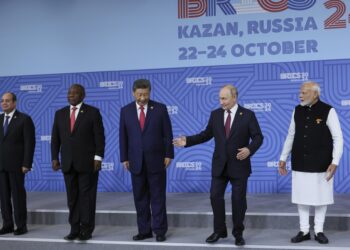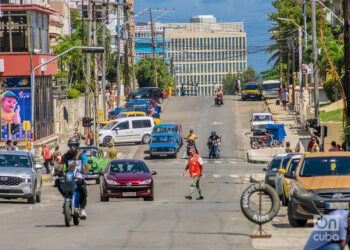” The vitality of Cuban cinema of the past four decades has resided in moments of denial and monitoring where usually emerge groups of authors with such a strong- expressively personalities that can not stop setting patterns, or assuming a search that usually results in a risk. That’s what art history scholars call vanguard, it is the blessing of any cultural project, and hence the maturity of this sample, because it could clarify that Cuban cinema is unique, ever stronger the more diverse. ”
These would be the words of film critic Dean Luis Reyes when he referred to the 1st Exhibition of Young Cuban Filmmakers in 2001, where were exhibited 22 documentaries, 11 fiction films and a cartoon. This edition paid tribute to the renowned directors Teresita Ordoqui, Belkis Vega and Tomas Piard, and was p resided by Omar Vazquez and Juan Antonio Garcia was the general director.
This event awarded no official prizes; however, the most honorees works by critics and the public did not pass unnoticed and were recognized in this first experience of the Sample: ¨CAIDIJE… La extensa realidad , ¨ by Gustavo Pérez; ¨La época, el encanto y el fin de siglo, ¨ by Juan Carlos Cremata; ¨ ¿ Me extrañaste mi amor?, ¨ by Leandro Martínez; ¨RRRing… , ¨ by Pavel Giroud; ¨ Clase Z Tropical, ¨ by Miguel Coyula, ¨Más de lo mismo, ¨ by Esteban Insausti; ¨ Motos, ¨ by Ián Padrón and ¨Se parece a la felicidad, ¨ by Aarón Vega.
Omar Gonzalez, president of the Cuban Film Institute (ICAIC in Spanish) commented on the need to create an alternative space for Cuban emerging film, “It is primarily the need before reality that we have to explore and extend, because ICAIC´s viewpoint is not only Cuban cinema, but the overall audiovisual. We must consider what the young filmmakers do beyond the Institute. ”
The collateral segments of the Sample in this first edition were called ¨¡Ojo pinta!, ¨ which was an informative section of the Hermanos Saiz Association (AHS in Spanish) Film Workshop (1987-1993); ¨¿Con los ojos de ayer?, ¨ which was a presentation that paid tribute to Cuban cinema, and ¨Premios a la sombra, ¨ a section displaying awarded materials in other Cuban audiovisual spaces.
The event was not materialized in 2002 gone, but fortunately for moviegoers, it was not long, because the 2nd edition was held in February 2003, this time paying tribute to the director of the film ¨De cierta Manera, ¨ the greatest Cuban woman filmmaker: Sara Gomez.
Thus , the Charles Chaplin movie theater and other venues welcomed 13 fiction films, 21 documentaries and 3 cartoons. The jury in this case was made up by Juan Carlos Cremata, Nelson Rodriguez, Alina Rodríguez, José Manuel Riera and Gustavo Pérez Fernandez.
Let us remember then the works that transcended by their conceptual and aesthetic validity, and were awarded in this edition: La Maldita Circunstancia , by Eduardo Eimil; Video de Familia, by Humberto Padrón; Todo Por Ella, by Pavel Giroud; Habaneceres, by Luis Leonel León; Dos Hermanos , by Tamara Morales; El Televisor, by Arturo Infante; Las manos y el ángel, by Esteban García Insausti and Hasta que la muerte nos separe, by Marilyn Solaya.
Undoubtedly, the most applauded material was Insausti´s documentary, a filmmaker who confessed in an interview to Bladimir Zamora that “you can not underestimate any viewer. I always use a vanguard language whenever I have something to say. Many people hide behind the experiment their lack of talent. ”
But talent is a very common condition in young Cuban filmmakers. So, we just have to wait until next February (2004) for the most recent productions interacted with the public in the 3rd edition of the sample, which was already a very usual site, a space for cinematographic reflection, dialogue, and artistic gear. This time, the jurors were the film director Fernando Perez, cinematographer Raúl Pérez Ureta, actor Luis Alberto García, editor Julia Yip, animation director Miguel Vidal and film critic Juan Antonio García. And Alfredo Rostgaard, Oscar Morriña and Ernesto Niebla were on charge of the posters category.
This year emerged a section called ¨Intergenerational dialogues, ¨ which was an initiative to interact with other experiences, so, participants had the opportunity to talk with Alfredo Guevara, president of the Havana’s Film Festival, María Elena Molinet, costume designer and musician Edesio Alejandro.
On the other hand, the section ¨Master classes¨ has remained until today as one of the most welcomed options, where the audience receives the vision and teachings of the guests who deliver conferences and can also enjoy the projection of some of their works. On that occasion it was attended by filmmakers Fernando Perez -(La inútil muerte de mi socio Manolo (1989), Madagascar (1994)- José Massip -Páginas del diario de José Martí (1971)- and Daniel Díaz Torres -Alicia en el pueblo de Maravillas (1990)-.
The 4th Sample, in February 2005, became one of the largest contributions to the promotion of the genre of fiction cartoons. We just have recall the works Eme-5, by Ernesto Piña and Horizontes, by Adanoe and Yemeli Cruz.
From that moment, the presence of cartoons has increased in the Exhibitions of Young Cuban Filmmakers, and it has been shown through new ways and methods, formal and aesthetic, to communicate they are basic principles of art.
Meanwhile , the 5th Sample (2006) came under the tutelage of Waldo Ramírez and paid homage to that great of Cuban cinema who was Tomas Gutierrez Alea with the perspective that a film must show the reality of its time and always convey a message through visual language.
From those years, it was created the section ¨The gaze of the other, ¨ where filmmakers from other regions delve into the diverse strata of society. Let us not forget then the EICTV titles like Fidel, el hombre de las cucharitas, Listen and Sea … and Desvarío .
We then had to anticipate that the Sample had an inclusive, generating and progressive dynamic due to its huge diversity. Thus came the 6th edition in 2007 , which was a tribute to filmmaker Oscar Valdés, (El extraño caso de Rachel K., 1973).
This time, there were treated through experimentation, the most diverse points of view such as religiosity, the topics of race, sex and genre, rural and urban, marginality, the surrealism of reality, migration, among others.
For 2008, the organizers of this event focused on Santiago Alvarez (Now), a filmmaker who has inspired generations of young people to create their own speech, a theoretical basis, a solid research to represent their ideas. This 7th edition was dedicated to the also director of Hanoi . Martes 13.
According to Fernando Perez , “in filmmaking, as in all artistic creation, freedom is the only way; sincerity, the only mode; and defending self ideas, the only food.”
Thus we arrive in this tour to the 8th edition of the showcase which was held in Havana from February 24 to March 1, 2009.
This time was dedicated to the half century of Cuban cinema, and once again the young filmmakers came together to capture on film their criteria about human essence and its conflicts.
The sample was reaffirmed once again as the alternative event that not only promotes the works of young filmmakers, but that from the creation of new theoretical and debate spaces , is intended to rethink and solidify audiovisual creation as art and speech, immersed in a world where cinema is an industry and cannot be entirely divorced from this assumption.
The sessions of the programs Moviendo Ideas, Diálogos Intergeneracionales, and Clases magistrales and other theoretical events were filmed in order to seek feedback not only with the public but also with specialists, and of solving approaches and concerns of novice filmmakers. Thus, future discussions were promoted from the debates in such conversations, such as: the perspectives of the Cuban audiovisual production, the different criteria and ways of making films, the new experienced aesthetic and the foray into other film expression languages.
Meanwhile, the Original Music Prize granted to the best soundtrack, was another novelty of this 8th edition, section that promoted the conception of music exclusive for audiovisual works that intends to prevent copyright problems in international presentations. This time, the top prize was awarded to the short fiction film Oda a la Piña, by Laimir Fano and whose original music was provided by Elvira Pena .
The rest of the main awards in this eighth sample were granted to: in the animation category, Ser, by Orielvis Padrón, in half-length film, La bala, by Pedro Luis Rodriguez and in documentary, The Illusion, by Susana Barriga. Furthermore, it was given a Special Jury Prize, this time to the documentary Fuera de Liga, by the filmmaker Ian Padron.
The 9th, 10th and 11th editions were made under this same veil of sharpness, transgression and commitment to their reality and generation, where debate and feedback of experiences have encouraged the consolidation and diversification of the proposals.
Among the most exiting titles of these years were: El cuarto 101 , by Pedro Luis Rodríguez; Revolution, by Mayckell Pedrero; El mundo de Raúl, by Jessica Rodríguez; A dónde vamos, by Ariagna Fajardo; Tormentas de Verano, by Heidi Hassan; Reflexiones, by Yimit Ramírez and Laura Tariche; Memorias del Desarrollo, by Miguel Coyula; Camionero , by Sebastián Miló; De agua dulce, by Damián Saínz; among many others.
Thus, we arrive at the 12th ICAIC´s Young Filmmakers Sample, name that assumed this space since 2011. In this edition, the event will pay tribute to the TV Serrana in its 20 years of existence, and will display a collection of the best documentaries made by that TV producer in recent years, including the works of Ariagna Fajardo, Carlos Y. Rodriguez, Rigoberto Jimenez, Waldo Ramirez, among others.
The young filmmakers Ariagna Fajardo, Joanna Montero, Sheyla Pool, Alexander Rodriguez and Alexis de la O Joya, who are the members of the main jury, will be in charge of awarding the best proposals among 28 documentaries, 33 fiction films, and 11 cartoons which are present on this occasion.
Thus, the public may be updated with the young Cuban filmmakers´ work, and getting close to their new productions such as La Certeza , by Armando Capó; ¡Crac!, by Jessica Rodríguez; El receso, by Damián Saínz; Melaza, by Carlos Lechuga; Oslo, by Luis Ernesto Doñas; Afuera, by Vanessa Portieles and Yanelvis González; Koala, by Yimit Ramírez and Claudia Claremi; La madre, by Ivette Ávila; La luna en el jardín, by Adanoe Lima and Yemelí Cruz; among others.
As usual, the Sample organizes the space ¨Moving ideas, ¨ this year with the theme: The Documentary. Different perspectives to narrate ; Wishes, reality and reflections on documentary; Stories of social misfits : treatment and outcome; Disturbing the viewer, anything goes? ; Selecting the character, that’s the key; Where do young animation is in Cuba? ; and Production parameters vs. creative freedom?
Meanwhile, the meeting has organized several training activities as the script workshop, which will offer the renowned Spanish writer Rafael Cobos, who has been nominated several times to the Goya Awards; a master class on acting direction imparted by the Cuban theater director Raul Martin; and the conference “Keys for the distribution of a short film” by one of the founders of the Spanish distributor Marvin & Wayne-Short Film Distribution, Pablo Menendez, who is now responsible for its procurement department.
The section Making films selected in this edition five projects of unpublished scripts to participate in its expected pitching: Camino a casa, by Juan Pablo Daranas; París, puestas abiertas, by Marta María Borrás; Partir, by Estela Martinez Chaviano; No country for old squares, by Yolanda Durán and Robiert Luque; and Uno más, uno menos, by Juan Carlos Ceballos.
At more than a decade of young film in Cuba, it is important to continue experiencing other ways to invigorate this event as a space that legitimates these works emerging within the Cuban film scene. Perhaps for this reason, Salvador Perez’s commentary regarding the need to continue to strengthen this experience is so timely. He said: “These events are a vital space. For us who live in other cities, these samples allow us to catch up ourselves and exchange with paradigmatic personalities of Cuban cinema. These meetings manage to break our inertia. However these spaces need to expand their convening power among the audience, and a greater spreading, so that in this way they could know the work of the young Cuban filmmakers. “










